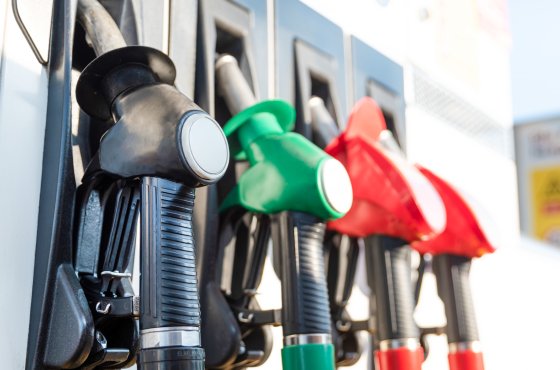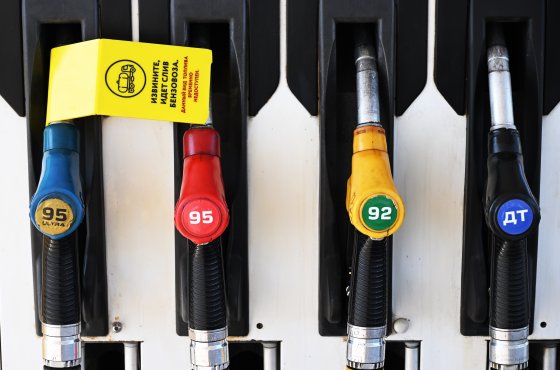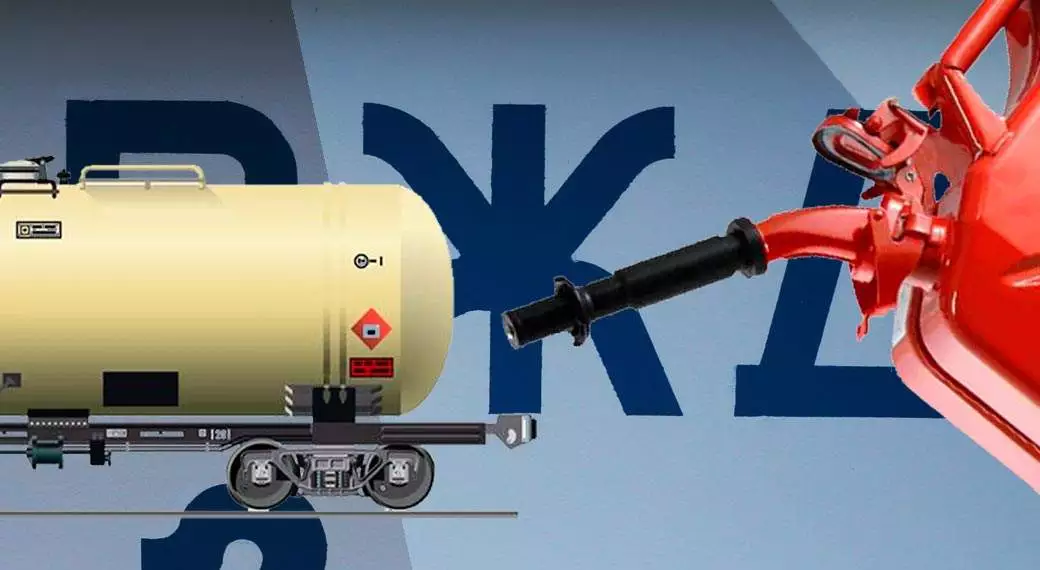The reasons for the increase in gasoline prices, which surpass inflation (8.4% compared to 4.16% as of September 22), and the 1% rise in DF over the past month (3% since the beginning of the year) is attributed to a sharp increase in wholesale prices, which are aligned with exchange rates. Gas stations must source fuel somewhere, and apart from the exchange or oil depots, there are no alternative sources. Large chains owned by oil companies can purchase fuel directly from refineries (RFs); however, again, the price relies on exchange rates.
Exchange trading levels are influenced by factors such as potential risks, informational backdrop, supply volumes, macroeconomic conditions, quotes, and more. Since early August, unexpected refinery repairs due to drone strikes and the ongoing risk of oil companies losing budget compensation for maintaining wholesale fuel prices below export levels (the damping mechanism) have fueled price increases. The latter is linked to the breach of the gasoline A-92 exchange price (which serves as a reference for the damping mechanism) by exceeding the level after which the damping resets (66,495 rubles per ton, and currently, A-92 is trading at 73,821 rubles per ton). This raises a key question: why have the prices escalated?
Yuri Stankevich, Deputy Head of the State Duma Energy Committee, points out that the profitability of oil refining this year is low. Overall, vertically integrated oil companies (VINC), which manage the entire production chain from extraction and refining to selling finished fuel at their gas stations, are expected to see profits cut in half compared to the previous period. The reduction in product output, coupled with rising production costs, tax burdens, and excise duties, has created conditions for an "ideal storm," which has manifested in rising exchange, wholesale, and retail prices.
Experts believe that a ban on diesel fuel exports will help curb price increases.As previously mentioned, the deficit is limited to gasoline. The surge in wholesale and retail prices for DF is solely due to seasonal factors (demand typically rises in the autumn) combined with profitability issues in oil refining and retail trade. Reports about gas station closures in various regions are more linked to negative trading margins than to a complete lack of fuel available for sale.
According to Dmitry Gusev, Deputy Chair of the Supervisory Board of the "Reliable Partner" Association and a member of the expert council for the "Gas Stations of Russia" competition, even if there is a production deficit currently in the market, it is always offset by reserves built during winter and spring. However, it has been relatively challenging this year to create those reserves; gasoline prices did not increase in spring (there was no incentive to purchase, hold back, and subsequently sell at higher rates), and interest rates were sufficiently high. Nonetheless, the fundamental issue in the fuel market remains the low profitability of operations. There are no incentives to build new RFs or gas stations, no comprehensive plan for gas station placement, and the industry lacks any significant investment appeal.
The government has already announced an extension of the total ban on gasoline exports until the end of the year and an export ban on DF for non-producers (traders). Moreover, to maintain payments for the damping mechanism for VINC, it is planned to raise the upper limit for pricing, after which the damping resets, by 10% for both gasoline and DF.
In the view of Sergey Frolov, managing partner at NEFT Research, the export ban will help stabilize DF prices, as all volumes previously directed to foreign markets will now be redirected to the domestic market. However, there will be no influence on gasoline prices. It appears that gasoline will need to be imported to cover local deficits (specifically in the South and the Far East).
Sergey Tereshkin, director of the OPEN OIL MARKET fuel marketplace, agrees: a mere export ban will not suffice to resolve the crisis, and increasing domestic supply will be crucial, including through imports from Belarus, Kazakhstan, and several other countries.
Stankevich asserts that directive restrictions will not lead to increased fuel availability in the market unless refineries promptly complete their unscheduled repairs. Therefore, all possible measures should be taken to protect facilities from new drone attacks. A return to a stable surplus of gasoline and diesel in the market will lead exchange prices to drop. I hope that we will see such a trend in October, he notes.
Prices will likely remain at comparable levels over the next month. The only systemic solution would be to complete the modernization program of RFs, which will help to boost gasoline production. Additionally, a military solution to ensure the protection of RFs has been long overdue, believes Frolov.
According to Tereshkin, the primary challenge during the current crisis lies in the risks of gasoline shortages connected to necessary repairs at RFs. Furthermore, the timing of these repairs is unpredictable due to US and EU sanctions on the supply of equipment to Russia, the expert explains.
Regarding the damping mechanism, Stankevich believes that the decision to revise it is undeniably overdue. However, it is better to be late than never. The profitability of oil refining is directly contingent on receiving back excise taxes. Amendments to the Tax Code will allow the government to adhere to its promises of keeping retail prices in line with inflation levels. Although it is already evident that in 2025, prices will surpass the upper threshold established by the macroeconomic forecast.
Additionally, it is important to note that the current A-92 rates are already exceeding the possible upper threshold for damping payments (72,740 rubles per ton). For DF, the rates are approaching this limit (74,360 rubles per ton; currently 70,400 rubles per ton). Payments are based on average monthly figures. It is unclear how oil companies will react if, at month-end, even after adjustments, the damping resets. It is also uncertain when the changes to the damping calculations will take effect, whether from August 1 or September 1. If the latter, then oil producers will not receive payments for August.
Gusev suggests that considering it has been more than five years since the damping mechanism was introduced, and agreements between the government and oil producers to keep gas station prices within inflationary limits have changed considerably, it may be time to discuss new operational rules. This should take into account the altered conditions both globally and within our country. Instead of attempting to manually navigate another crisis, it should be acknowledged that the system has become ineffective and that a new one needs to be developed — involving all market participants, according to the expert.
Source: RG.RU




